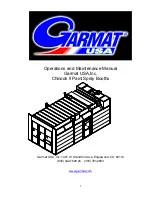
•
Two individual conversion paths. The inputs can be different standards SD, HD or 3Gb/s and
unlocked to the single output format.
•
Frame sync with output phase control in Frames, Lines and pixels with respect to reference. Delay
setting are stored per output format for a constant latency operation.
◦
30 Frames delay offset (per channel)
-
1080p60
-
1080i60
-
1080p50
-
1080i50
-
1080p30
-
1080p25
-
1080p24
◦
60 Frames delay offset (per channel)
-
720p60
-
720p50
◦
125 Frames delay offset (per channel)
-
SD525
-
SD625
•
5 GPI inputs assignable to different preset banks
◦
Input selection
◦
Output mode
◦
Audio shuffling, gain and phase (110 only)
•
ARC triggers by VI, WSS, WSSext and S2016 (AFD)
•
Individual color corrector for video path A and B
•
Transparent for 8 channels of embedded audio per channel
•
Embedded domain cross input audio shuffling, gain and phase control (110 only)
•
Embedding and de-embedding through Synapse bus
•
Video proc-amp (Y and C control)
•
Color corrector (RGB and total gain, RGB and total black)
•
Hue control for NTSC inputs
•
Locks to a Bi-Level or a Tri-level sync, or to an SDI input.
•
Full control and status monitoring through the Ethernet port (ACP).
The frame synchronizer works best if the inputs are switched according the SMPTE guidelines
described in RP168.
This ensures that not only the picture but also the ancillary data remains correct. The frame
synchronizer however can handle complete asynchronous switching at the input.
To ensure correct operation, the F-delay of the card needs to be 1 or higher to allow enough
time to mask the error.
INSTALLATION AND OPERATION MANUAL
Synapse 2GF100 - 2GF110 | 4. The 2GF100-110 Card |
7
















































